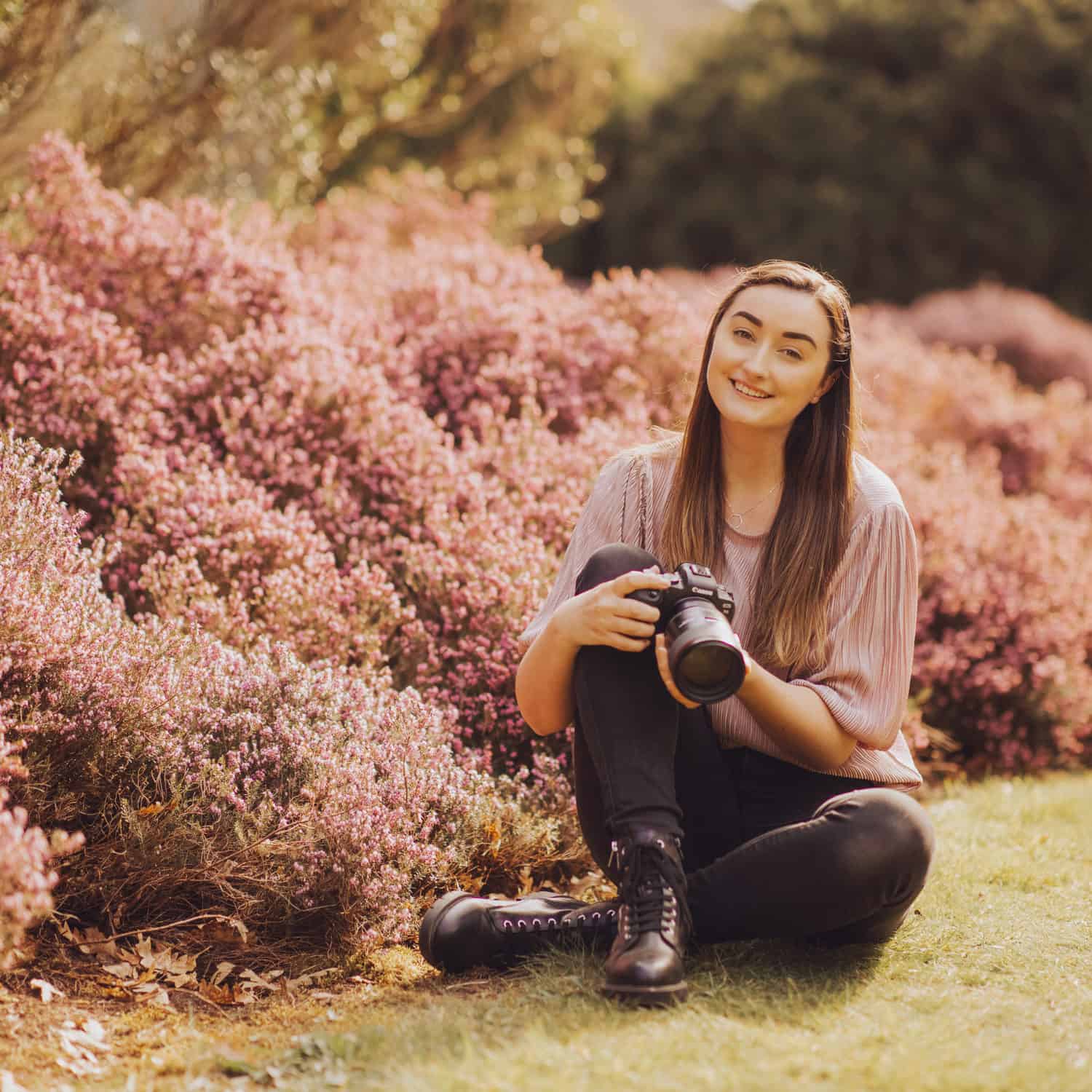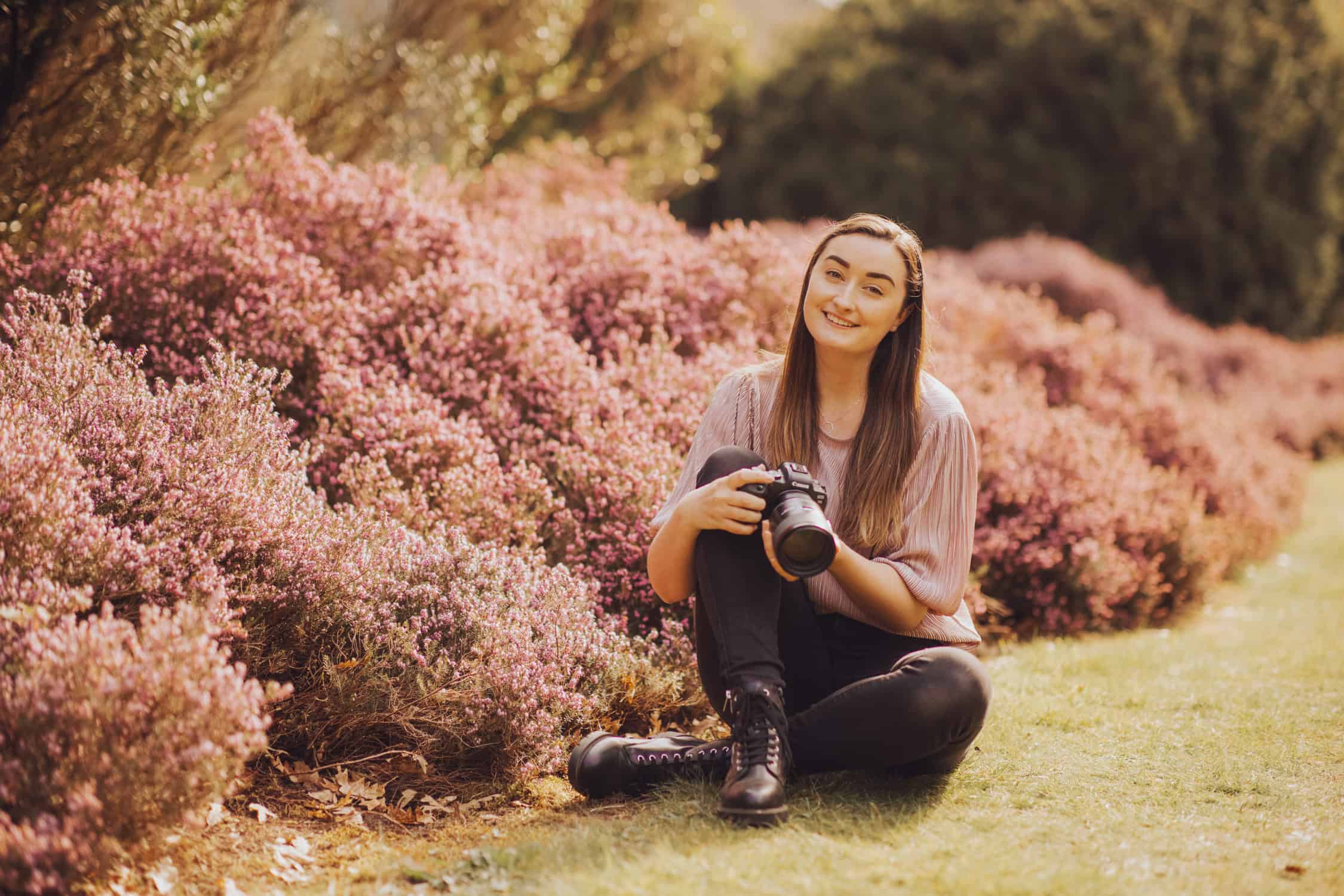After writing about why I’m switching to a mirrorless system from my DSLR, I wanted to follow up with which mirrorless camera I chose and why! So this is why I chose the Canon R6 over the R5.
I know a lot of people will think I’m crazy for opting to lose 10MP from my current camera set up! But hear me out!
These are the reasons I chose to buy two 20MP Canon EOS R6’s over the 45MP Canon EOS R5!
Why I chose the Canon R6 over the R5
SIMILARITIES
There are so many similarities between both of these cameras that at first. It can seem very difficult to decide which is right for you! They both use the same incredible AF eye-tracking which is mindblowing! But there are a few key differences that made me choose the R6 overall.
THE FILE SIZE
Obviously having a 20MP camera compared to a 45MP camera means that the file sizes are going to be much smaller.
The resolution on the R5 is 8192×5464 whereas the R6 has a resolution of 5472×3648.
- Cropping
For the past 3 years, I’ve delivered my wedding galleries with their photos sized to 4500 on the long edge. This means that even with the R6, I still have a small amount of room to crop. I’m not a heavy cropper anyway, it’s usually just straightening the horizons which leaves me plenty of room with this resolution.
– Data Storage
If I went for the R5, the file size are almost double that of the R6. When I’m shooting upwards for 3000 photos per wedding, that’s a lot of data to store!
Bigger file sizes mean more memory cards, more hard drives and storage space, all of which costs more money.
- Workflow Speed
Having larger files also means my workflow would be slower as I’m importing, culling and edited. Weddings aren’t the fastest to edit as the best of times. I wanted to avoid making my workflow even slower with huge file sizes.
CFEXPRESS MEMORY CARDS
The R5 uses a faster style of memory card called a CFExpress card. Due to the fact the files are so large, it needs this extra power in the memory cards. But with extra power comes a hefty price tag. You’re looking at £250+ for a 128GB card whereas standard SD cards are £33 for the same size.
8K VIDEO
I chose the R6 over the R5 because I felt I’d be paying for features that I’d never use. The R5 and R6 are so similar in so many ways apart from file size (which we’ve covered) and their video capability. The R5 can shoot video in 8K which is great, but I’m a photographer and I’d never use this feature.
PRICE OF CAMERA
The price difference between the R5 and R6 meant I could purchase two R6’s for almost the same price as just one R5!
LOW ISO CAPABILITIES
There’s a secret benefit to the 20MP of the R6. The fewer pixels on the sensor, the better the low light capabilities and dynamic range! This means the camera works incredibly well in low light with minimal noise and grain even at very high ISOs. This is brilliant for wedding photographers who often shoot in dark churches or venues.
WEIGHT OF CAMERA
The R6 at 675g is ever so slightly lighter than the R5 at 738g. One of my main reasons for switching from DSLR to mirrorless was to carry less weight on long wedding days.
CONCLUSION
I’ve had my camera for a couple of weeks now and I’ve got to say I’m incredibly impressed! It’s so fast, lightweight and my old lenses have a new lease of life when using the adapter. The eye-tracking is amazing for people and animals!
If you’re on the fence about the R5 or R6 I hope this blog post on why I chose the Canon R6 over the R5 helps you with your decision!
UPDATE!
The DIFFERENCES BETWEEN THE CANON R6 AND THE R6 mark ii
For a brand to bring out a version two of a camera just two years later is not a common thing. But Canon released the R6 mark ii IN 2022.
Megapixels
The newer version has improved resolution at 24.2 megapixels. However, it’s a fairly minimal increase and in my opinion not worth upgrading for. Although it will allow for more space to crop without using post-production features like super resolution in lightroom.
CONTINUOUS SHOOTING SPEED
Both cameras excel in capturing fast-paced action, but there’s a slight difference in their continuous shooting capabilities. The Canon R6 offers impressive burst shooting at up to 12 frames per second (fps) with the mechanical shutter and up to 20 fps with the electronic shutter.
Meanwhile, the Canon R6 Mark II takes it a step further with a boosted burst rate of up to 14 fps with the mechanical shutter and up to 30 fps with the electronic shutter. This enhancement makes it the ideal choice for sports and wildlife photographers who require lightning-fast performance.
AUTOFOCUS
One of the standout features of both cameras is their advanced Dual Pixel CMOS AF II autofocus system, providing swift and accurate focusing across the frame.
While the Canon R6 offers an impressive 6,072 selectable autofocus points covering approximately 100% of the frame vertically and 90% horizontally, the Canon R6 Mark II takes autofocus performance to new heights with an expanded coverage of 90% both vertically and horizontally, comprising 6,740 selectable AF points. This broader coverage ensures greater precision in focusing, especially when tracking moving subjects.
In-Body Image Stabilization (IBIS)
Both cameras feature 5-axis in-body image stabilization, allowing photographers to shoot handheld at slower shutter speeds while still maintaining sharpness.
However, the Canon R6 Mark II introduces an upgraded IBIS system, offering up to 8 stops of stabilization when used with compatible lenses. This improvement is particularly beneficial for handheld shooting in challenging lighting conditions or when using telephoto lenses.
Video Capabilities
Videographers will find both cameras to be formidable tools for capturing high-quality footage. The Canon R6 supports 4K video recording at up to 60fps and offers various recording options, including 10-bit 4:2:2 internal recording.
With the Canon R6 Mark II, Canon has upped the ante by introducing 8K video recording capability at 30fps, along with 4K recording at up to 120fps for silky smooth slow-motion footage. Additionally, it offers 10-bit 4:2:2 internal recording in all 4K modes, providing greater flexibility in post-production.
Is it worth upgrading from the R6 to the R6ii?
In conclusion, while the Canon R6 and Canon R6 Mark II share many similarities in terms of design and features, the Mark II iteration brings several notable upgrades to the table. From the higher resolution sensor and enhanced autofocus system to the improved image stabilization and expanded video capabilities, the Canon R6 Mark II raises the bar for performance and versatility in the mirrorless camera market.
Ultimately, the choice between the two models will depend on individual preferences and specific photographic needs, but one thing is certain – both cameras promise to deliver exceptional results for photographers and videographers alike.
Personally, as a full-time wedding photographer, I don’t see any of these minor upgrades as a reason to upgrade both my R6 bodies. I’ve been shooting on them for a while and I have no complaints, they deliver high quality photos every time and I’m utterly in love!
But if you didn’t get your hands on an R6 when they came out, your only option for a new camera is the mark ii version and you absolutely can’t go wrong.
If you have any questions come and ask us in my free Facebook community: The Hive!

This blog post contains affiliate links. If you click a link to purchase a product it will cost you nothing but gives me a small payment in return. Think of it as your good deed for enjoying my blog post! Thank you!

